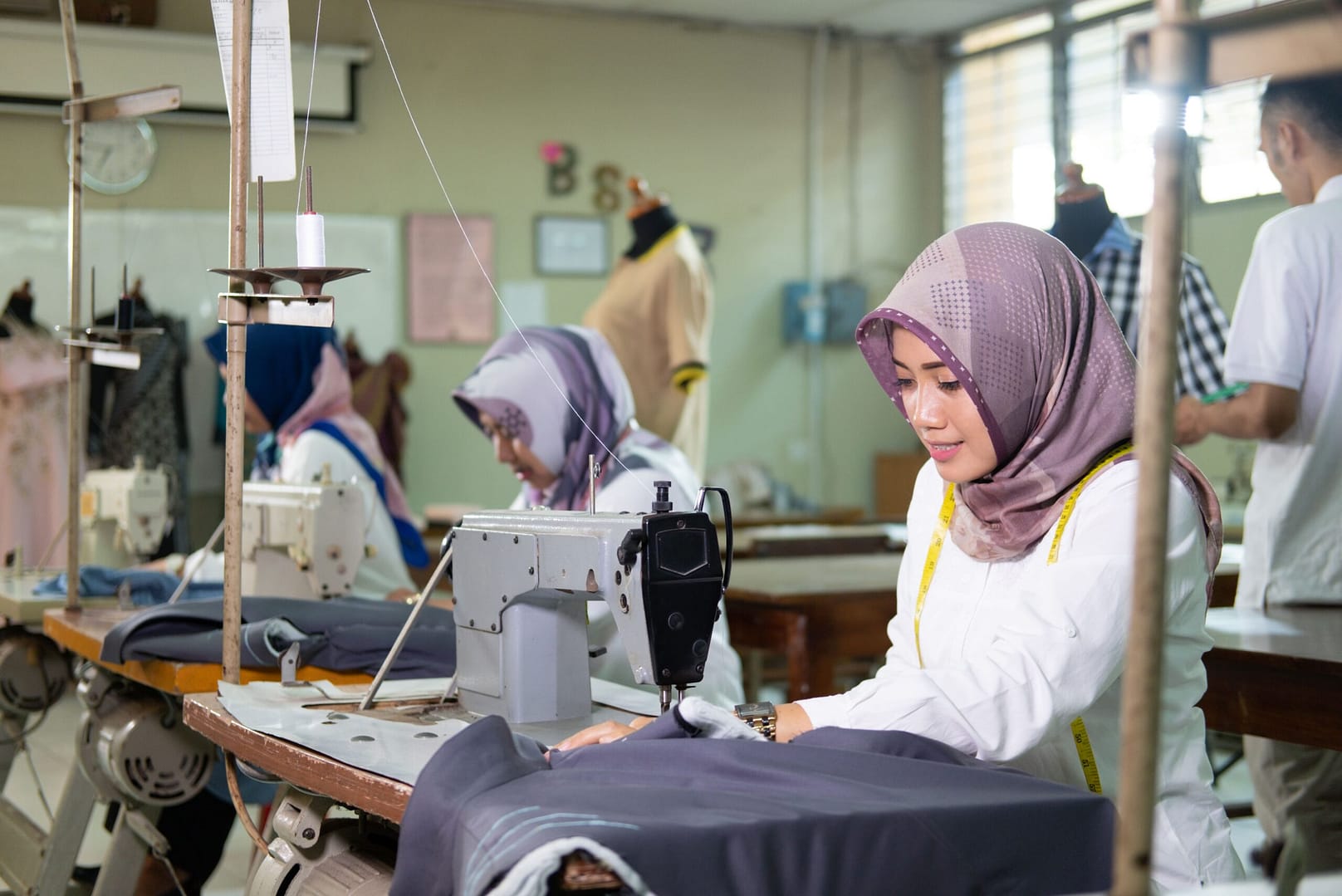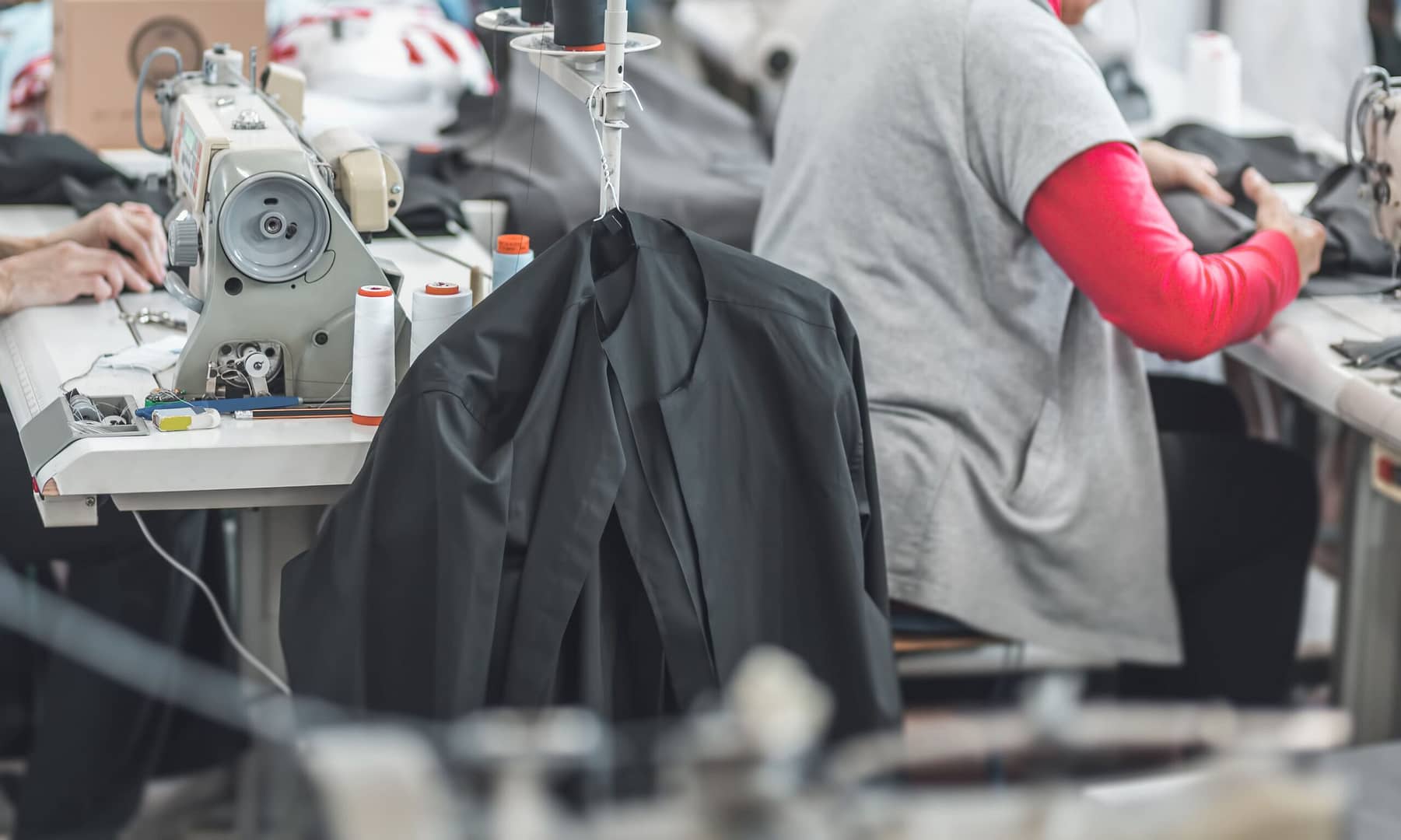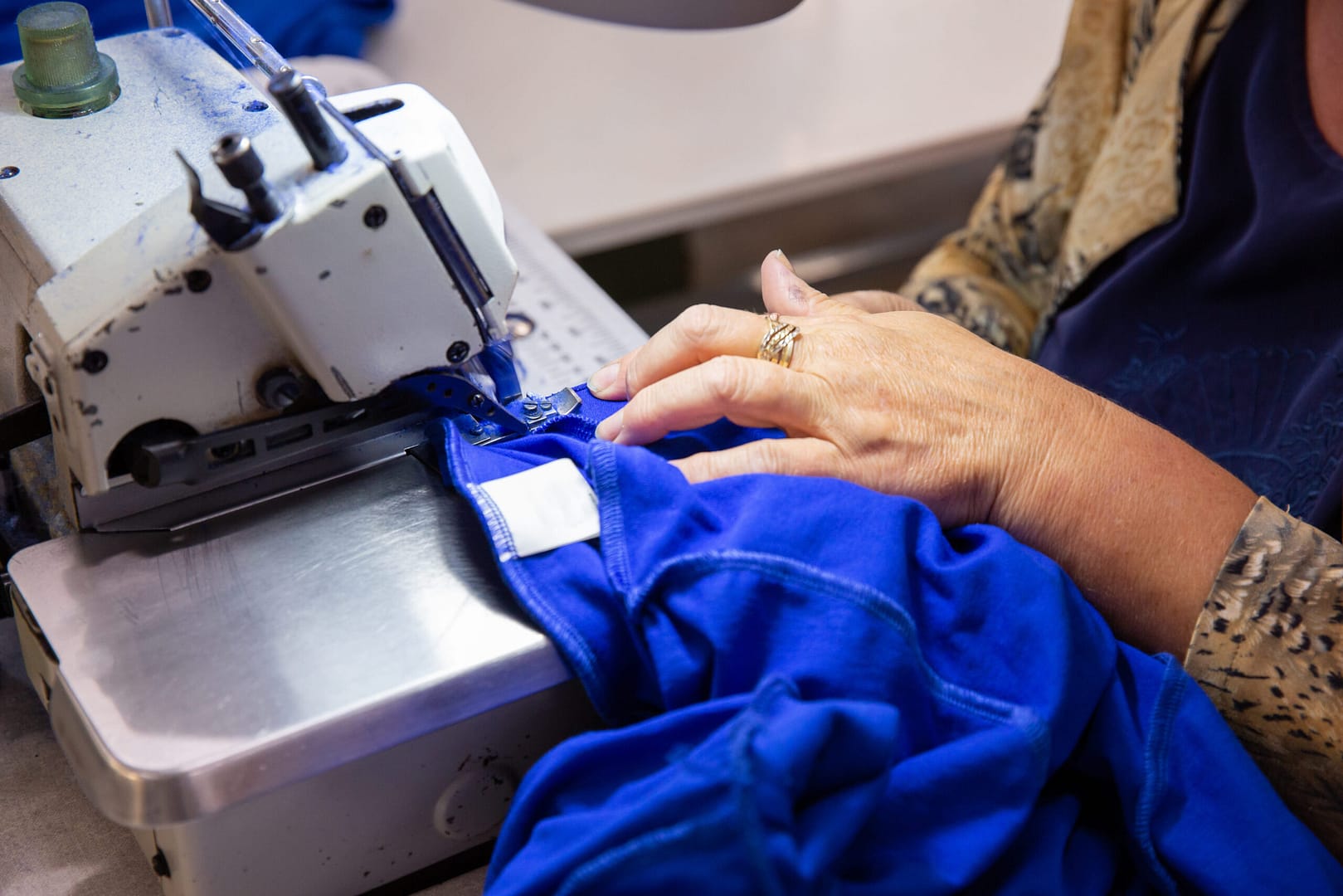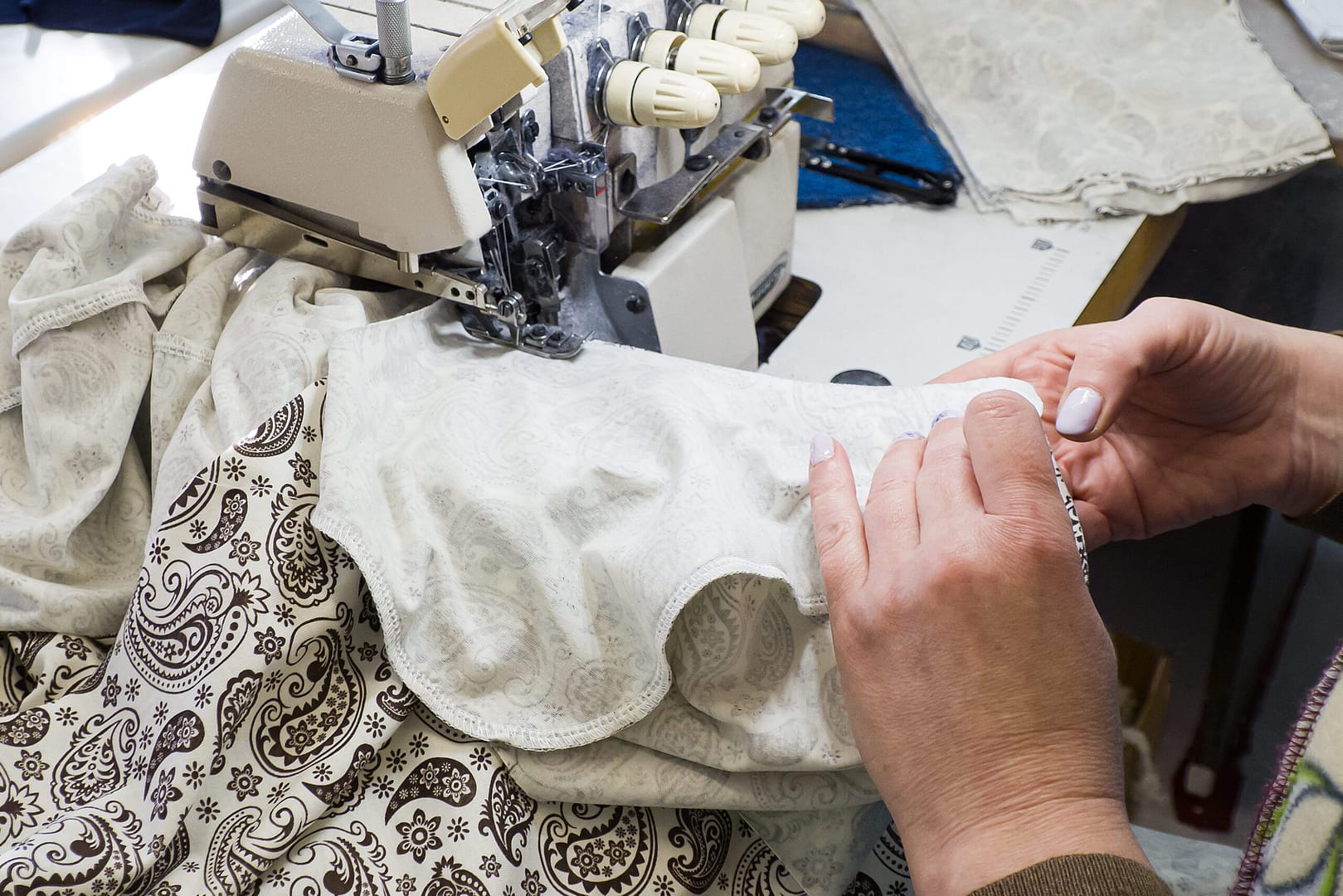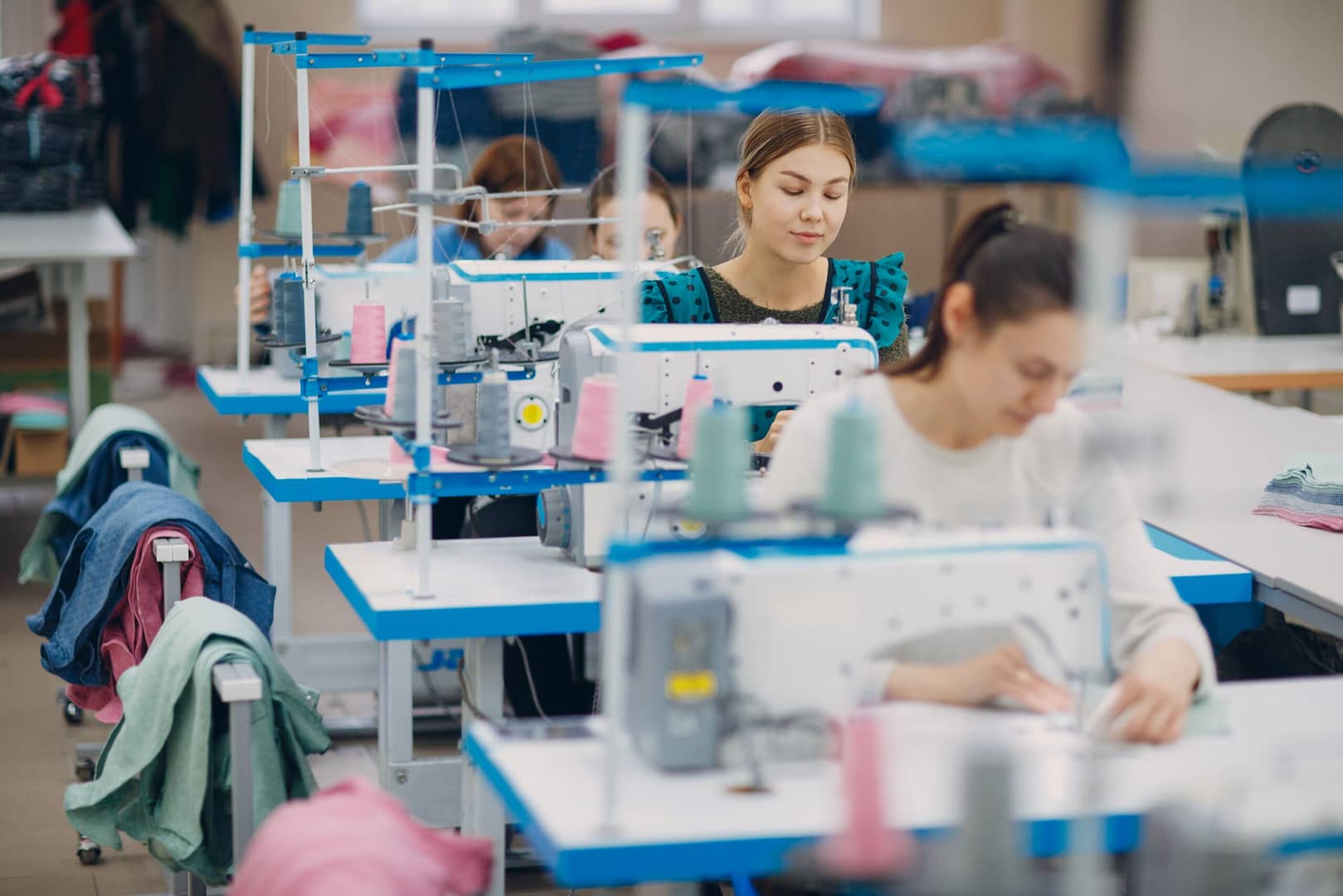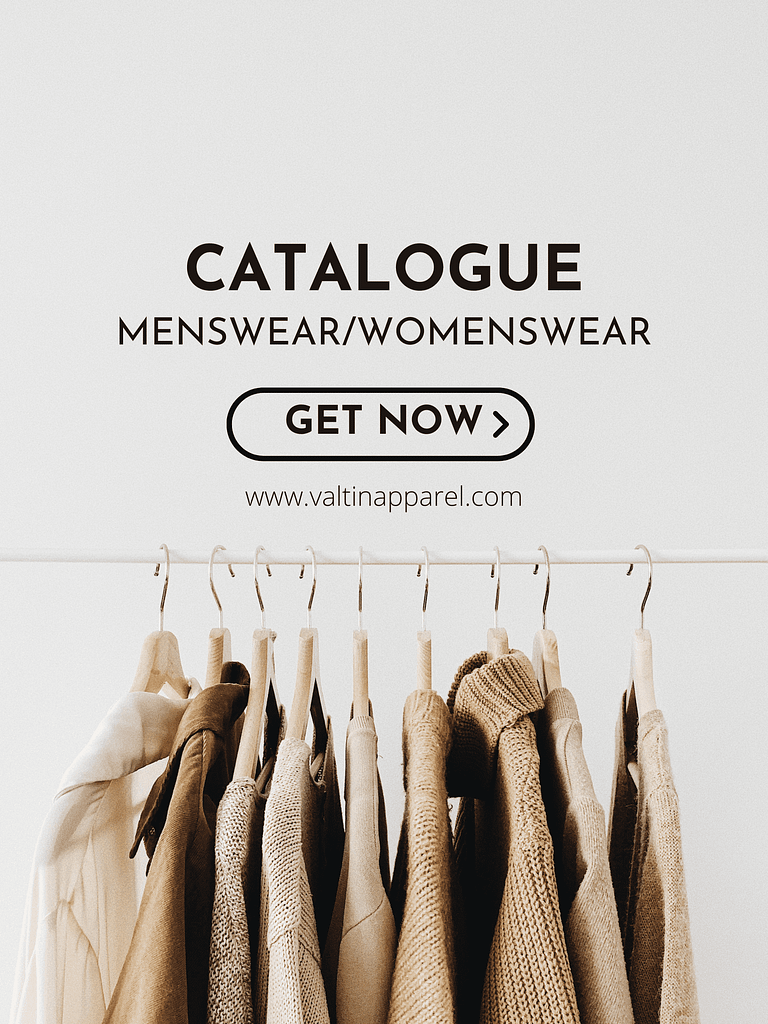When building a new clothing brand, few items offer the universal appeal of the hoodie. Versatile, comfortable, and effortlessly stylish, hoodies have become a wardrobe essential across all demographics. Whether it’s streetwear, athletic, or loungewear, hoodies fit a variety of niches, making them ideal for startups entering the apparel market.
Getting hoodie production right is crucial for brand success. Custom hoodies express brand identity and serve as a creative canvas that sets you apart. Whether you envision a minimalist or intricate design, every manufacturing decision brings your vision to life.
This guide is tailored for startups looking to understand hoodie manufacturing, from fabric selection to quality craftsmanship. By the end, you’ll have the knowledge to make informed choices that align with your brand values and customer expectations.
Understanding Hoodie Types and Styles
One of the first crucial decisions you’ll need to make when manufacturing hoodies is determining the type and style that best suits your brand and target audience. Hoodies come in a variety of styles, each with unique appeal depending on your customer base and brand positioning. Whether you’re targeting streetwear enthusiasts, athleisure fans, or simply offering a cozy staple, understanding the key hoodie styles will help you cater to your market effectively.
Popular Hoodie Styles
Pullover Hoodies
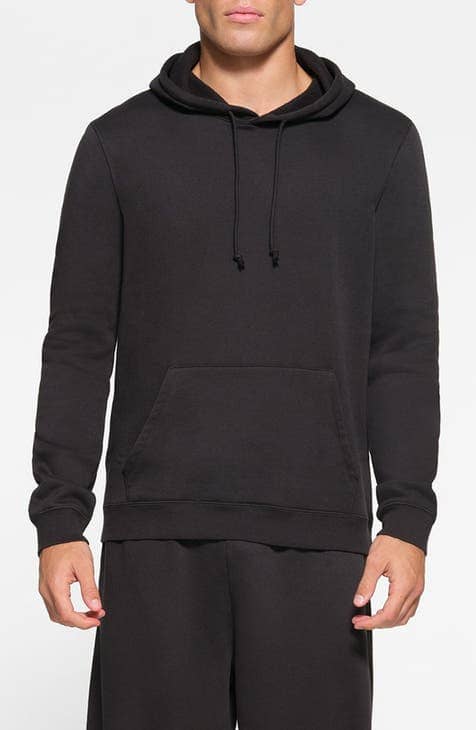
The classic pullover hoodie is one of the most popular choices across all demographics. It’s a simple, straightforward design that offers comfort and ease. The absence of a zipper makes it ideal for designs with a large graphic or statement logo across the chest. Pullovers often give a cozy, laid-back vibe, making them a favorite for casual and loungewear collections.
Zip-Up Hoodies
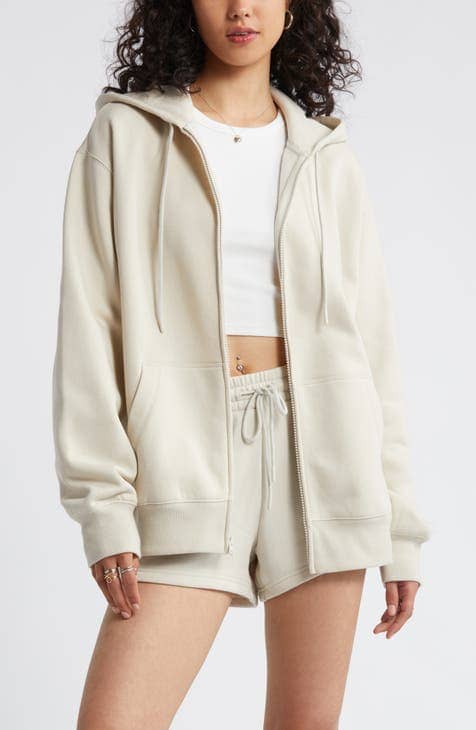
Zip-up hoodies provide versatility, allowing the wearer to adjust their level of warmth or showcase other pieces of their outfit underneath. This makes zip-up hoodies perfect for layering. They also offer an excellent canvas for branding on both sides of the zipper, making them a popular choice for those who want flexibility in style.
Cropped Hoodies
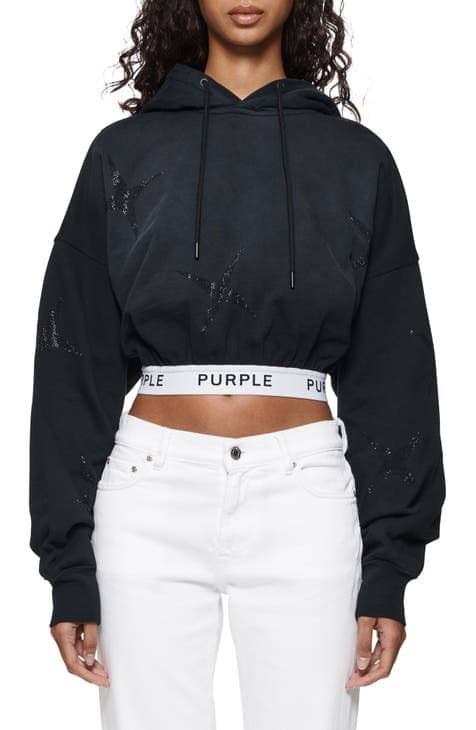
Cropped hoodies are trendy, especially among younger demographics and those interested in athleisure or streetwear looks. These hoodies are cut shorter, typically at or above the waist, providing a more fashion-forward silhouette. Cropped hoodies can give a fresh, modern edge to your collection, especially when paired with high-waisted jeans or leggings.
Oversized Hoodies
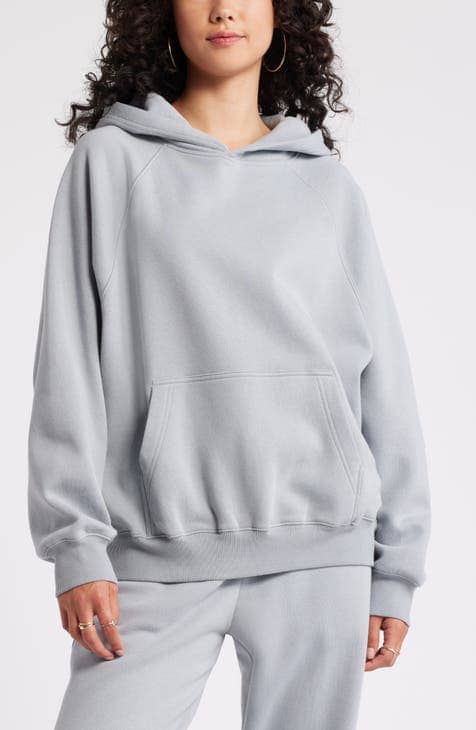
The oversized hoodie trend has grown in recent years, favored by those who enjoy a relaxed, baggy look. Oversized styles are not only comfortable but also cater to the fashion-forward crowd, offering a statement piece that’s all about comfort and style. This style works particularly well for brands targeting a younger audience or anyone embracing the casual, oversized streetwear trend.
Tech Fleece Hoodies
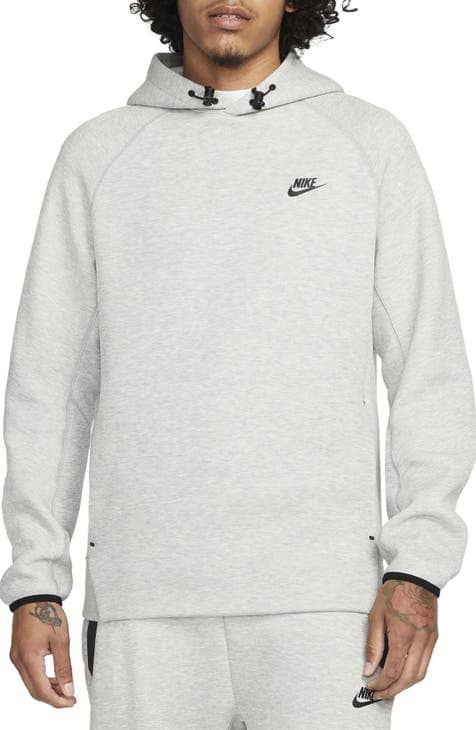
For those targeting a more performance-driven or athleisure audience, tech fleece hoodies are ideal. These hoodies often incorporate performance fabrics that are lightweight, breathable, and moisture-wicking, catering to individuals who value functionality along with style.
Choosing the Right Style for Your Audience
The key to selecting the right hoodie style lies in understanding your target market. For startups, it’s important to align the style of your hoodies with the preferences and lifestyle of your customers:
- Streetwear Brands: If your brand is focused on streetwear, oversized and cropped hoodies are likely to resonate well with your audience. You may want to experiment with bold prints, embroidery, or even special finishes like acid wash to create that iconic street-style appeal.
- Athleisure & Activewear: For brands that position themselves within the athleisure or activewear market, tech fleece and zip-up hoodies are a fantastic choice. They offer practical benefits like temperature control, making them ideal for customers who prioritize both performance and style.
- Loungewear & Casual Wear: If you’re targeting those who love a cozy, laid-back style, the classic pullover hoodie remains a staple. Soft, plush fabrics combined with muted colors or simple graphics will appeal to those looking for ultimate comfort.
Trending Designs to Consider
It’s also worth keeping an eye on current trends to ensure that your hoodies appeal to contemporary tastes:
- Minimalist Branding: Simple logos or small embroidery details are trending for those looking to create premium-looking basics.
- Bold Graphics: Large, eye-catching graphics work well for streetwear styles, especially in vibrant colors that create a statement.
- Unique Textures: Mixing fabrics, such as adding sherpa-lined hoods or panels of contrasting materials, can elevate your hoodie and make it stand out.
Your hoodie’s design isn’t just about how it looks—it’s also about how it feels and fits into your customer’s lifestyle. Selecting the right style helps you communicate the message and values of your brand in a way that feels authentic and desirable to your target audience.
Selecting the Perfect Fabric
Choosing the right fabric for your hoodies is a pivotal step in creating a product that not only looks good but also feels comfortable and meets your customer expectations. The fabric choice influences factors like comfort, durability, print quality, and even the environmental impact of your product. As a startup, selecting the right material can help you balance quality and cost, while also differentiating your hoodies in a crowded market.
Common Hoodie Fabric Options
Cotton

Comfortable and Breathable: Cotton is a widely popular fabric for hoodies due to its natural softness and comfort. It’s breathable, making it a suitable option for year-round wear, and offers a premium feel that customers often prefer.
Eco-Friendly Option: Using organic cotton can appeal to the environmentally-conscious segment of your audience. Though more expensive, it adds value to your brand’s sustainability message.
Print Compatibility: Cotton provides an excellent surface for printing designs, which ensures vibrant and high-quality prints—great for streetwear or branded merchandise.
Polyester
Durability and Cost-Effectiveness: Polyester is a synthetic fabric known for its durability and affordability. It’s wrinkle-resistant and holds its shape well, making it ideal for hoodies designed for performance or active use.
Moisture-Wicking Properties: Polyester’s moisture-wicking capabilities make it a go-to for athleisure hoodies. However, the synthetic nature can make it less breathable compared to natural fibers like cotton.
Color Retention: Polyester also tends to hold dye well, which means your colors stay bright even after multiple washes—perfect for hoodies featuring bold designs.
Cotton-Polyester Blends
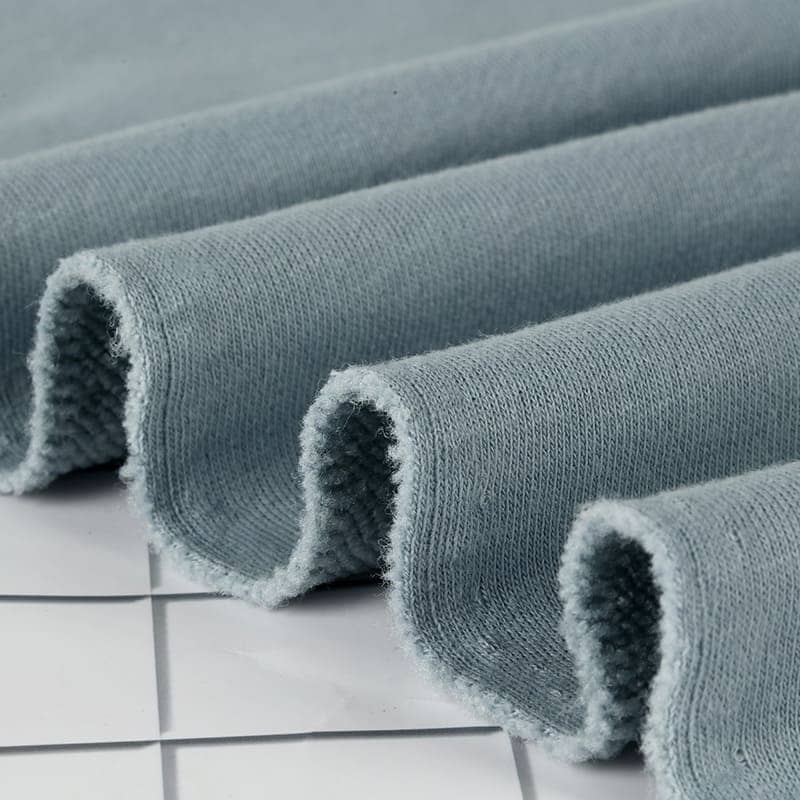
Balancing Comfort and Performance: Many hoodies are made from a cotton-polyester blend, offering the best of both worlds: the comfort of cotton and the durability of polyester. Blends like 60/40 (cotton/polyester) or 70/30 are common, providing softness while reducing shrinkage and increasing the hoodie’s lifespan.
Versatility: This blend is also versatile in terms of customization, allowing for both screen printing and embroidery to look professional, which is essential for any startup looking to establish a high-quality brand image.
Fleece
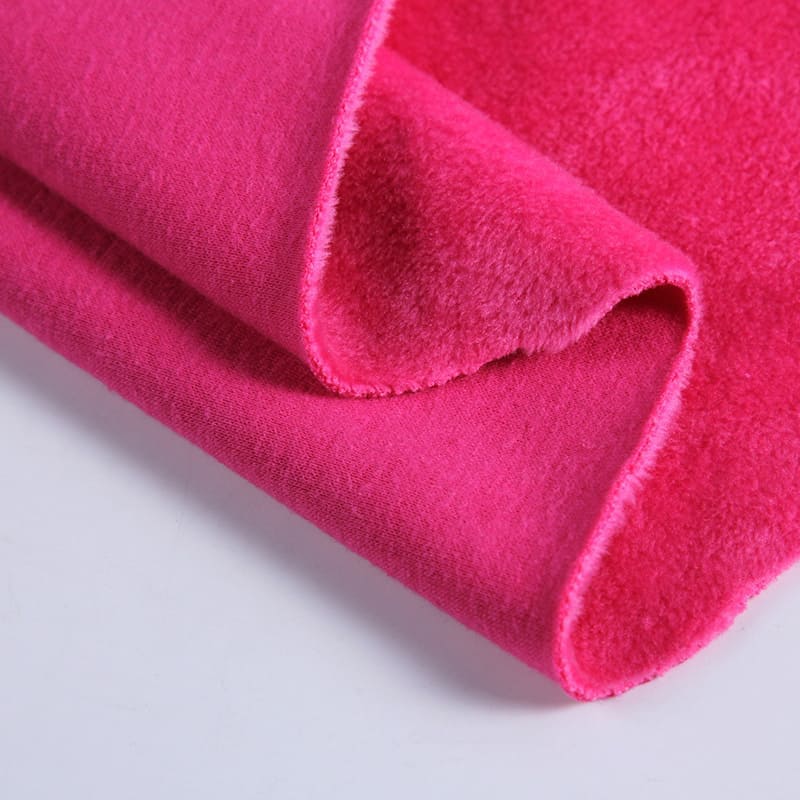
Warmth and Softness: Fleece is another popular fabric option for hoodies, often used for its warmth and plush, cozy feel. Typically made from polyester, fleece hoodies are ideal for cooler climates, making them an attractive option for fall and winter collections.
Budget-Friendly: Fleece tends to be affordable while providing an extra layer of comfort, which can be appealing for customers looking for warmth without breaking the bank.
French Terry
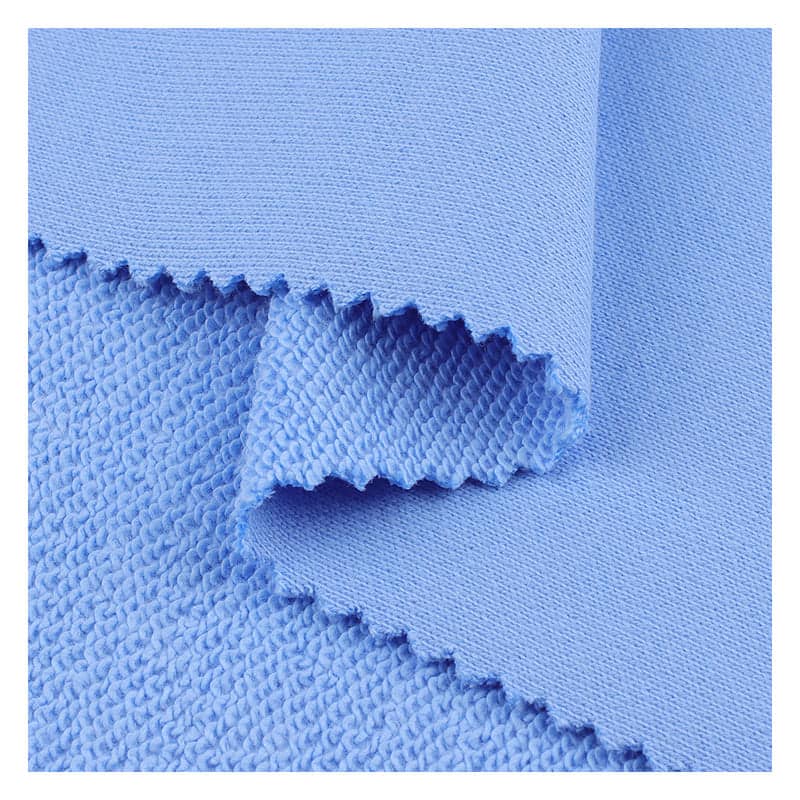
Lightweight and Breathable: French Terry is a midweight fabric with loops on the inside and a smooth surface on the outside. It offers a lightweight feel compared to fleece and is great for transitional seasons.
Casual & Versatile: French Terry is excellent for creating casual, relaxed hoodies that work well for both lounging and light outdoor activity.
How to Choose the Right Fabric
The key to choosing the right fabric lies in considering the needs and preferences of your target audience while aligning them with your brand values:
- Customer Comfort and Use Case: Are your customers buying hoodies for lounging, working out, or making a fashion statement? If you’re targeting those who wear hoodies as a form of activewear, fabrics like polyester or performance blends are optimal. For a casual, everyday look, soft cotton or a cotton blend will be more appealing.
- Seasonal Appropriateness: Consider whether your hoodies will be marketed for a particular season. Fleece is ideal for winter wear, whereas lighter options like French Terry are perfect for spring or fall. Matching the fabric weight to the season ensures that your product is relevant and usable year-round.
- Market Trends and Sustainability: There’s a growing trend towards sustainability, and many consumers are leaning towards natural and organic materials. Opting for organic cotton or recycled polyester could help your brand align with these values, making your product more attractive to eco-conscious buyers.
- Cost Considerations: Startups need to keep a close eye on production costs. Fabrics like pure cotton are generally more expensive, while blends tend to be more affordable. It’s essential to strike a balance between quality and cost to meet your pricing strategy while ensuring your customers receive a product they love.
Valtin Apparel’s Access to China’s Largest Fabric Market
One of the advantages of working with Valtin Apparel is our strategic location near China’s largest fabric market. This proximity gives us access to an extensive selection of fabrics, ensuring that you can find the exact material you need to bring your vision to life. If you have a particular fabric in mind but aren’t entirely sure how it feels or performs, our team can help find the closest match or even source samples to compare.
Valtin Apparel’s fabric options are vast, meaning you can customize not just the look of your hoodies but also the feel, allowing your startup to stand out by offering a product that is truly unique. Whether you’re looking for a luxury organic cotton or a cost-effective polyester blend, we can source exactly what you need—backed by quality assurance and years of expertise.
The Craftsmanship Behind a Quality Hoodie
While selecting the right fabric and style are crucial steps in hoodie production, it’s the craftsmanship that ultimately determines whether your product will be cherished by customers or relegated to the back of their closets. High-quality craftsmanship means paying attention to the details that improve the fit, comfort, and longevity of your hoodies. This section delves into the essential elements of quality hoodie construction that your startup should consider when creating a standout product.
Key Features That Determine Hoodie Quality
1. Stitching and Seams

Reinforced Seams: The seams are often the first point of failure in poorly constructed hoodies. To ensure durability, quality hoodies feature reinforced seams, often with double or triple stitching. Reinforced seams prevent unraveling, add extra strength, and withstand the stress of frequent wear.
Flatlock Stitching: Flatlock stitching is used to avoid bulkiness in the seams, providing a clean, polished look and added comfort. This is especially useful for activewear hoodies, where seams rubbing against the skin can cause irritation.
2. Ribbed Cuffs and Neckline
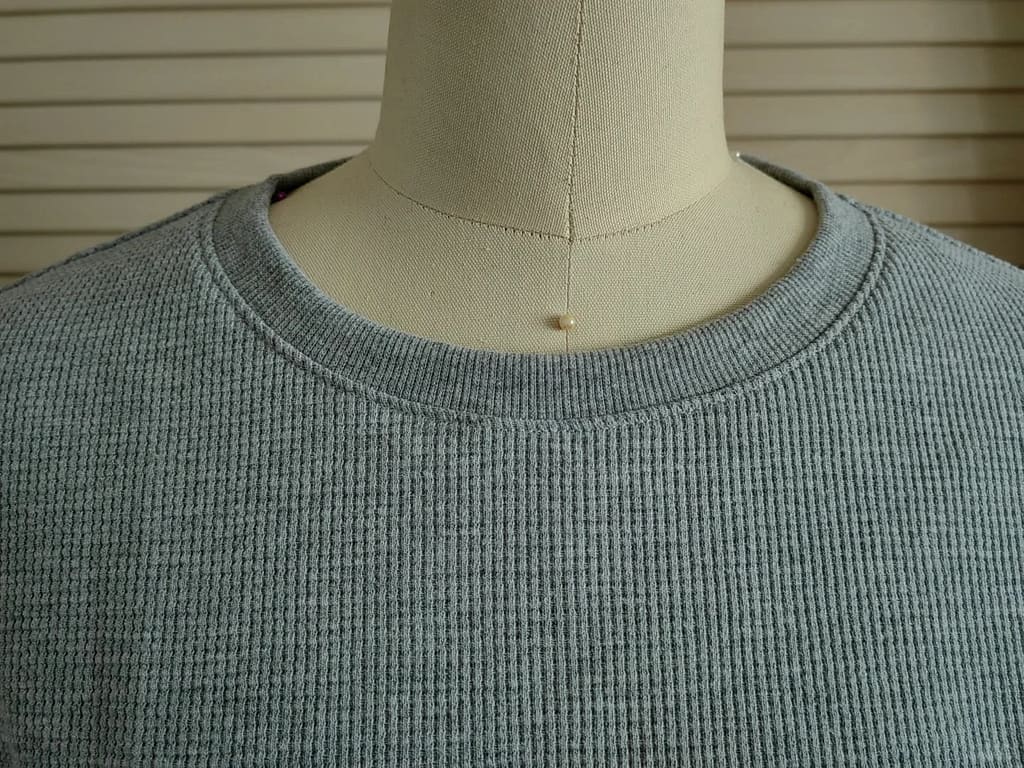
Elasticated Elements: Ribbed cuffs and neckline play an important role in ensuring a snug and comfortable fit. They should be made from a blend of materials that provide both elasticity and durability, allowing them to retain their shape even after multiple wears and washes.
Quality Check: Poor-quality ribbing can easily stretch out of shape, which results in a less polished look and compromises the fit. Ensuring that these elements are produced with high-quality elastic materials is key to long-lasting hoodies.
3. Hood Construction
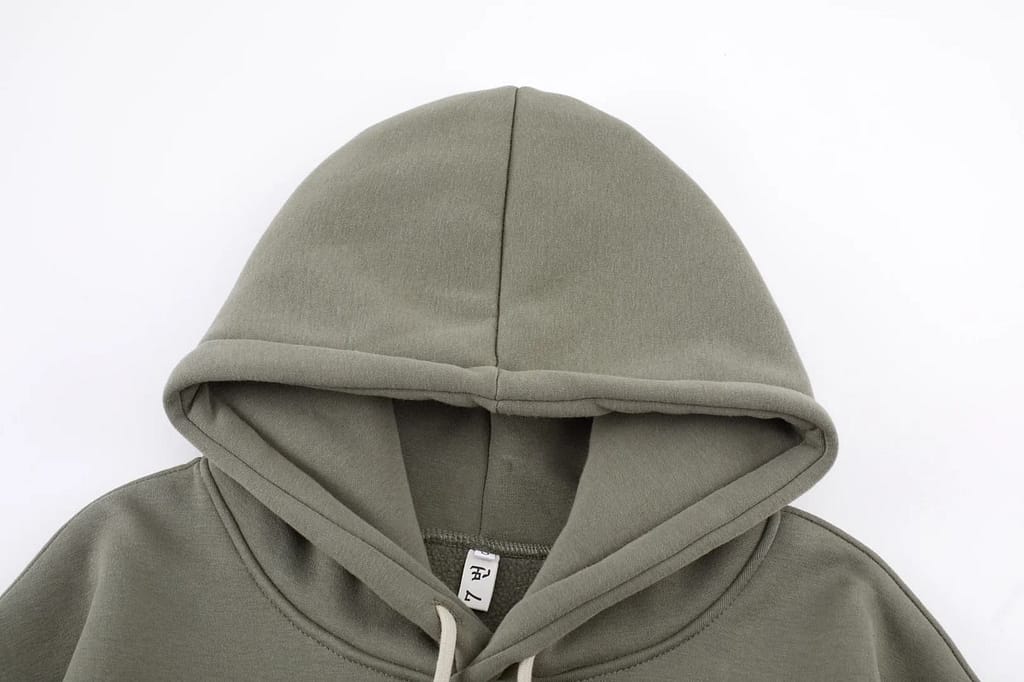
Double-Layered Hoods: A double-layered hood not only adds extra warmth but also provides a premium look and structure to the garment. The added fabric gives a more substantial feel, which can enhance the hoodie’s overall value.
Drawstring Quality: The drawstrings should be made of durable material and secured with metal eyelets. This prevents fraying and ensures that the hood remains functional for years. You can also consider customization options for drawstring colors and tips to add a branded element to your hoodie.
4. Zippers and Pockets
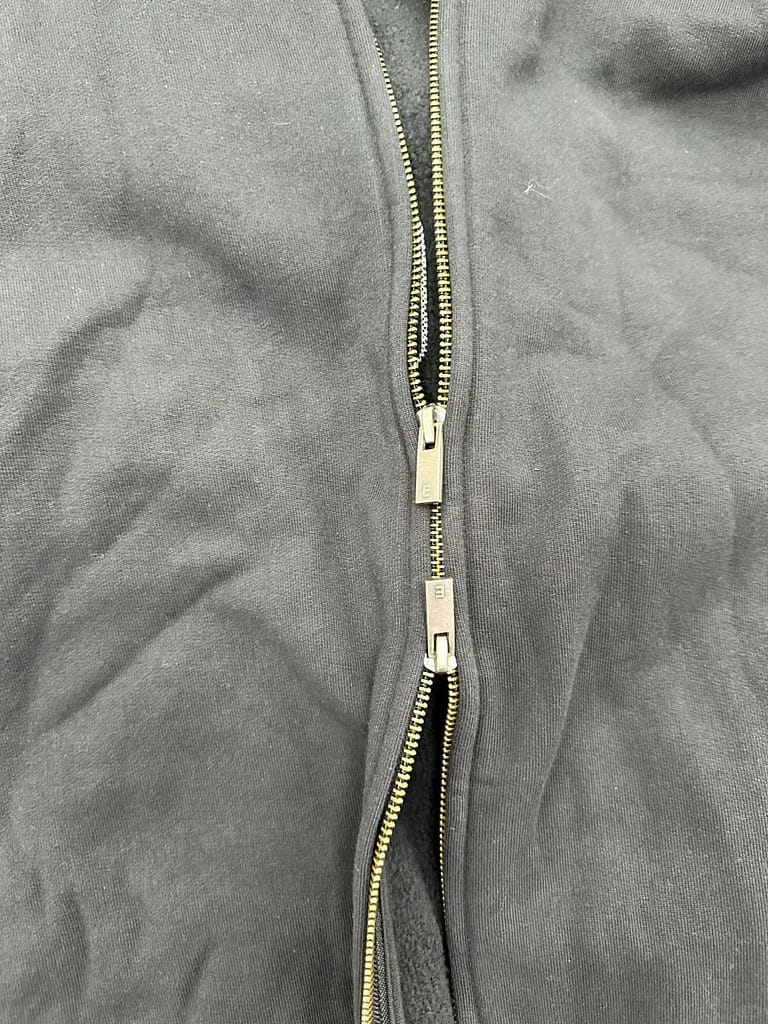
Durable Zippers: If you’re opting for a zip-up hoodie, the quality of the zipper is critical. Metal zippers tend to be more durable and provide a polished look, while plastic zippers are lighter and work well for a sportier feel. Choosing the right zipper style and ensuring smooth operation is key to providing a quality product.
Pocket Design: Kangaroo pockets are standard on pullover hoodies, while zip-up hoodies often have two side pockets. The pocket stitching must be robust enough to withstand regular use, as poorly sewn pockets can easily become detached or develop holes.
5. Lining and Interior Quality
Brushed Interiors: A high-quality hoodie often features a brushed interior, which gives it that soft and cozy feel. Fleece-lined or brushed interiors enhance comfort and warmth, making the hoodie more desirable for customers looking for coziness in colder seasons.
Smooth Finish: The interior should be free from loose threads or uneven seams, as these can affect comfort and diminish the overall quality of the hoodie.
How Craftsmanship Impacts Comfort, Durability, and Brand Perception
The details of craftsmanship—like stitch quality, fabric consistency, and properly finished edges—directly affect the user’s experience with the garment. Startups need to recognize that these seemingly minor aspects are what make a hoodie feel luxurious rather than average. A well-made hoodie provides benefits that directly tie into your brand’s promise of quality and can significantly influence customer loyalty.
- Durability: Startups need products that can endure both production and extensive customer use. Poor craftsmanship leads to garments that easily shrink, tear, or lose their fit. A hoodie that stays in top shape for a long time reflects positively on your brand and builds consumer trust.
- Fit and Comfort: Craftsmanship affects how a hoodie fits and feels when worn. Reinforced seams and high-quality materials ensure that the garment is comfortable and well-fitted, allowing your customers to enjoy wearing it all day long. The right craftsmanship translates to hoodies that do not sag, fray, or pill, enhancing the wearing experience.
- Brand Perception: For new brands trying to establish a presence, quality speaks louder than marketing promises. When customers receive a well-crafted hoodie, they are more likely to associate your brand with reliability, care, and value. This increases the likelihood of repeat purchases and positive word-of-mouth—crucial factors for any startup looking to grow.
Valtin Apparel’s Manufacturing Expertise
At Valtin Apparel, we understand that every startup has a unique vision, and our job is to turn that vision into a high-quality product that speaks volumes about your brand. Our production lines are dedicated to maintaining the highest standards of craftsmanship:
- Attention to Detail: We employ skilled seamstresses and use advanced machinery to ensure that every seam is finished perfectly and every stitch adds to the overall durability of the garment.
- Customization Precision: Whether you’re adding embroidery, custom labels, or any other personalization, our team meticulously ensures every detail is executed as planned. The customization is not just an add-on; it is seamlessly integrated into the product for a professional look.
- Quality Control at Every Stage: Our quality control doesn’t just take place at the end of production—it’s embedded throughout every stage. Each hoodie undergoes inspections for fabric quality, seam strength, and overall craftsmanship, ensuring that the end product exceeds your expectations.
Customizing Your Hoodies: Branding and Features
Customization is what sets your hoodies apart in a crowded marketplace and allows your brand to tell a unique story. As a startup, leveraging customization options can help establish your brand identity, connect with your target audience, and add significant value to your products. In this section, we’ll explore various customization options available for hoodies and how each choice can help communicate your brand’s message effectively.
Logos and Graphic Designs
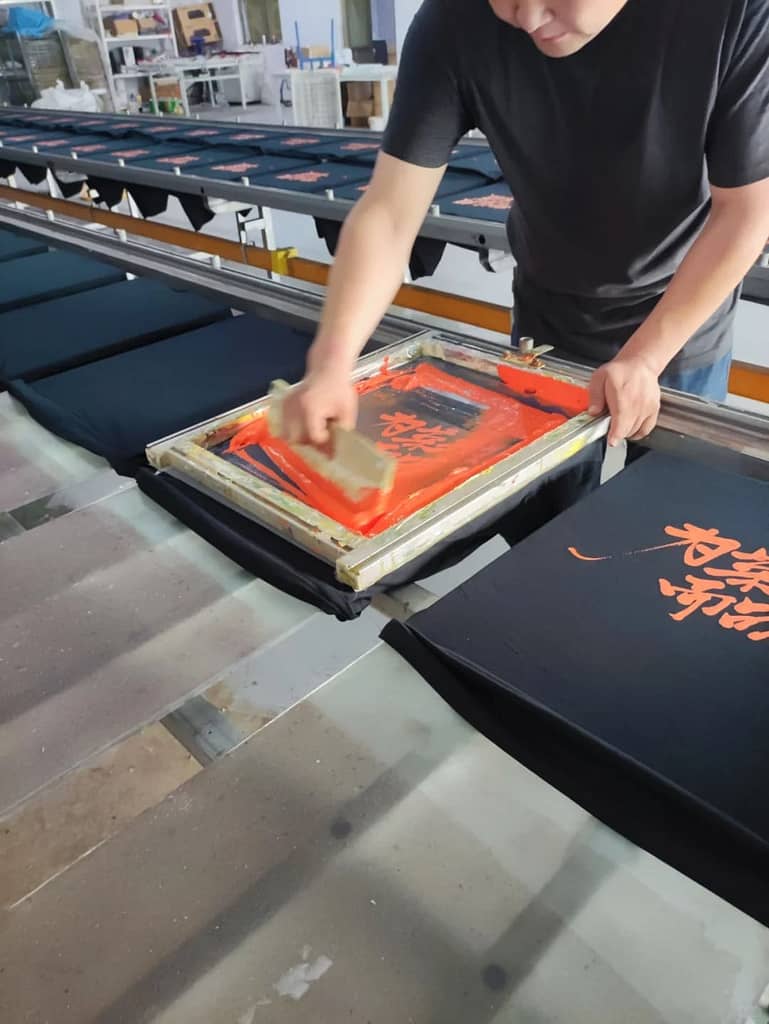
Screen Printing: One of the most popular methods for adding logos or designs to hoodies is screen printing. It’s a cost-effective and versatile option, ideal for bold and intricate designs with vibrant colors. Screen printing ensures your logo stands out, whether you want a small chest emblem or a large graphic covering the entire front.
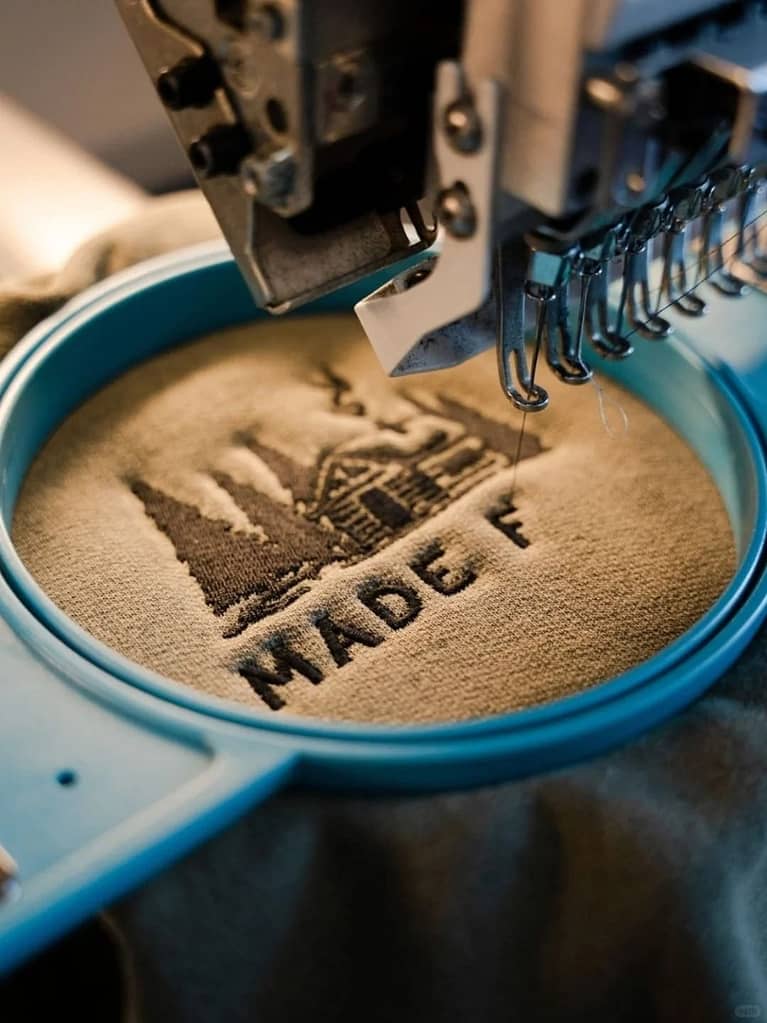
Embroidery: For a more premium and textured look, embroidery is an excellent choice. It adds a tactile element that suggests quality and craftsmanship. Embroidered logos or patches are often used on the chest, sleeves, or even on the hood itself, lending an upscale aesthetic that enhances the hoodie’s overall value.
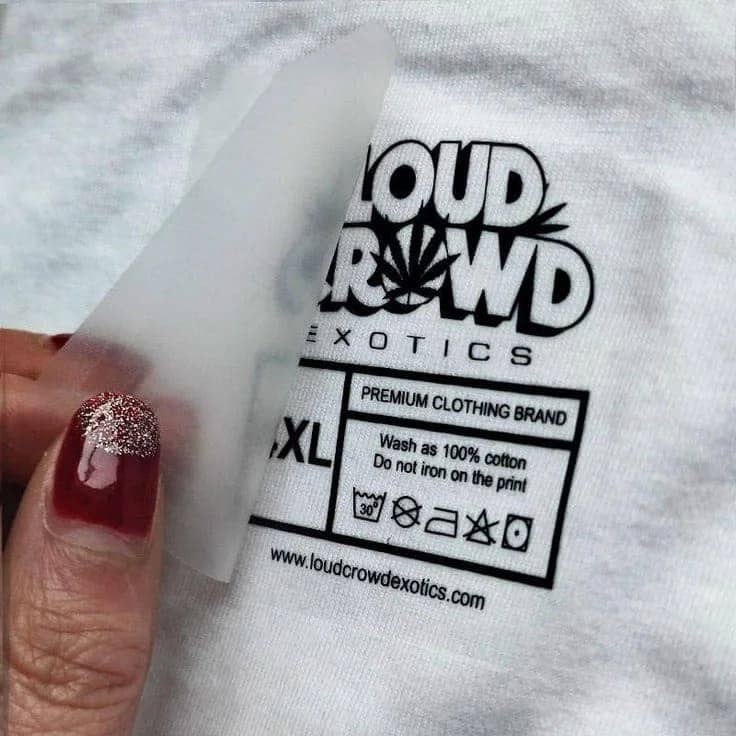
Heat Transfer: This method works well for smaller production runs or highly detailed artwork. Heat transfer provides vibrant and clear graphics, and it’s a great option if your designs require complex color gradients or intricate details that would be hard to achieve with screen printing or embroidery.
Color Customization

Color Options: The color of your hoodie is an immediate representation of your brand’s mood and aesthetic. Valtin Apparel offers a wide range of color options, whether you’re looking for classic neutrals like black, gray, and navy, or something more striking like pastels, earth tones, or even tie-dye effects. Customizing the color scheme ensures your hoodies are visually aligned with your branding.
Color Blocking: Color blocking is an eye-catching design trend that uses contrasting colors in different sections of the hoodie, such as the body, sleeves, or hood. This design style adds a dynamic, bold element to your product, helping your brand appear modern and fashion-forward.
Washing
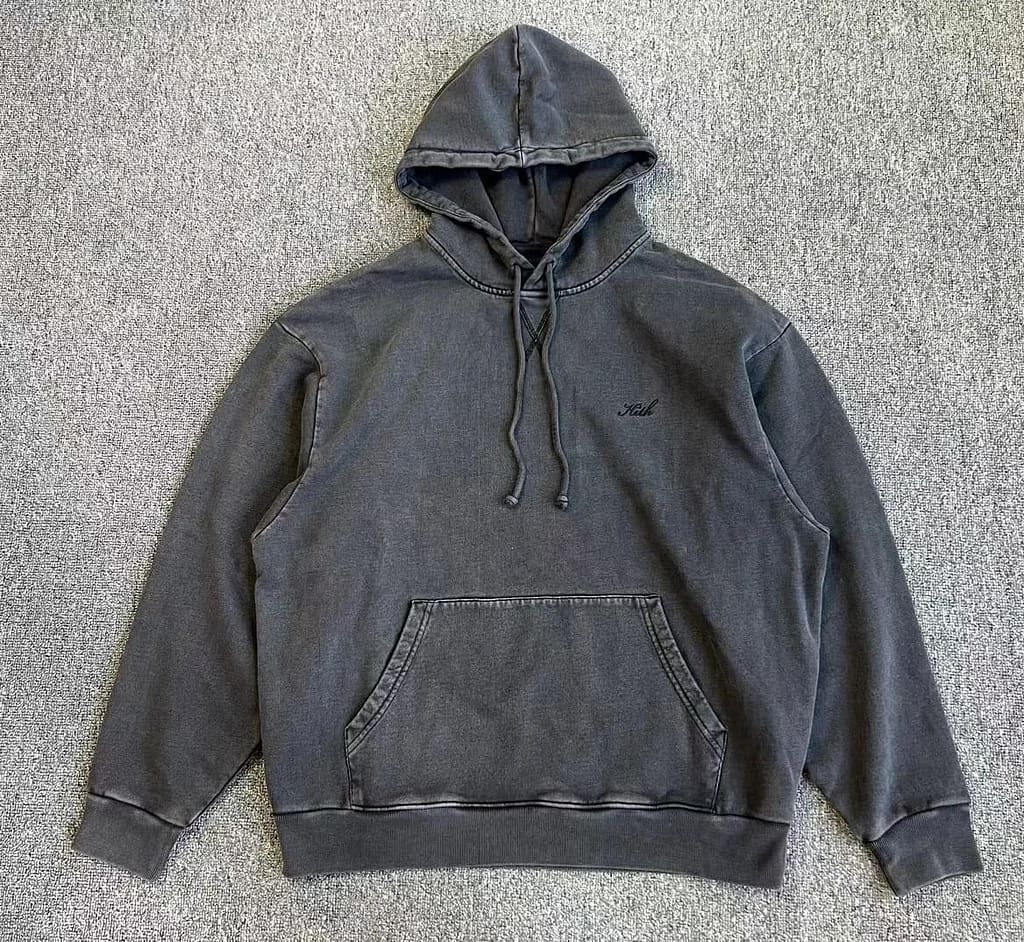
Acid Washing: Acid washing uses chemical treatments to create a dramatic, washed-out effect that gives the garment a retro or grunge vibe. This type of washing is commonly used to add a striking, two-tone pattern to hoodies. It works particularly well for certain streetwear collections, offering a highly distinctive and bold look.
Stone Washing: Stone washing involves washing the garment with pumice stones to create a distressed, worn-in look. This washing technique is often used for hoodies that are part of a streetwear line, where a vintage or aged appearance is desirable. Stone washing results in a softer fabric and creates faded color effects that add character to the garment. The final product looks unique and gives the impression of a well-worn, beloved hoodie, appealing to customers who prefer a vintage aesthetic.
Labels, Hang Tags, and Packaging
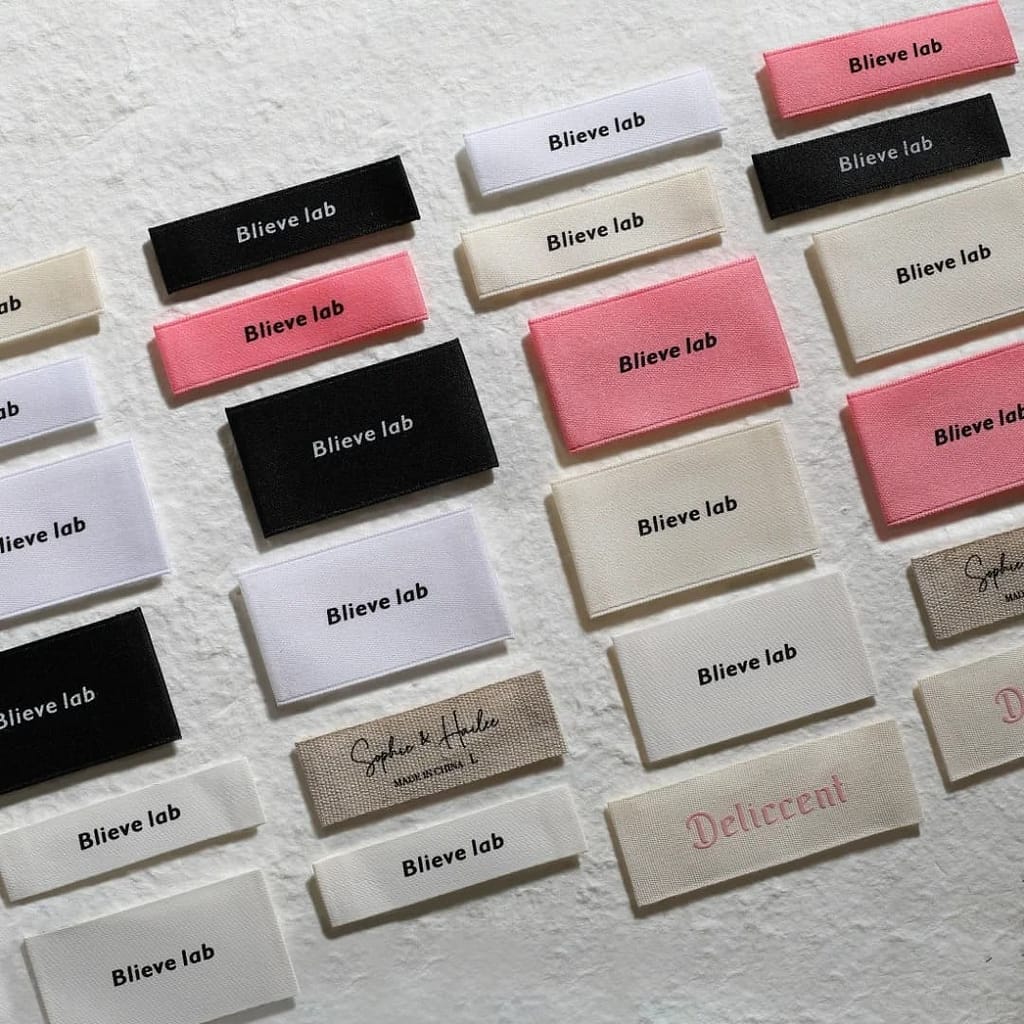
Custom Labels: Adding your brand’s labels is an essential step for establishing brand identity. Custom woven labels or printed tags can be sewn into the neck or hem, giving the hoodie a professional look. Labels can include your logo, brand name, fabric details, or washing instructions, ensuring that your brand remains visible throughout the lifecycle of the product.

Hang Tags: A well-designed hang tag can add a premium feel to your product. You can use hang tags to communicate your brand story, highlight special product features, or simply add aesthetic appeal. It’s an opportunity to make a strong first impression as soon as customers unbox their new hoodie.
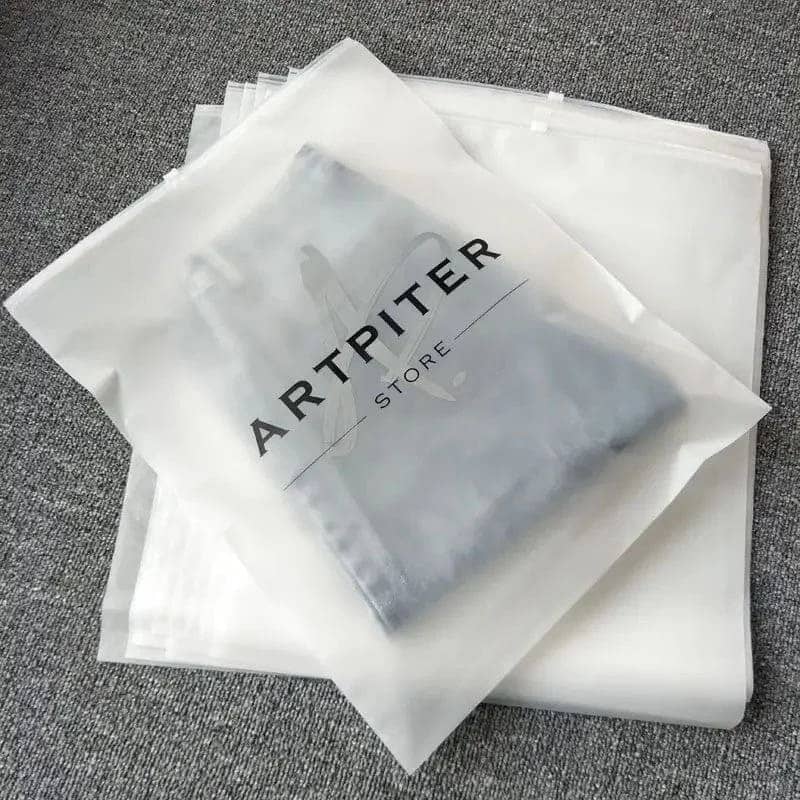
Branded Packaging: Custom packaging, such as branded poly bags or boxes, can enhance the unboxing experience and provide an added sense of value. Packaging is often overlooked by startups but serves as a vital touchpoint in shaping customer perception and promoting brand loyalty.
Unique Features and Functional Elements
Pockets and Zippers: The customization of functional elements like pockets and zippers can make a hoodie more appealing. Consider adding hidden pockets for practicality, or high-quality metal zippers for a more sophisticated look. Pocket placement and unique shapes can also be leveraged to set your hoodies apart.
Drawstring Customization: Drawstrings can also be customized with unique colors, tips, or even embossed branding. Consider using metal tips or special materials like leather or reflective string to make your hoodies stand out.
Hood Lining: The interior lining of the hood can be customized with a different fabric, pattern, or color. This subtle touch of customization adds a unique flair that gives customers something extra to love about your product.
Sustainable Elements and Ethical Branding
Eco-Friendly Fabrics: Incorporating sustainable fabrics such as organic cotton or recycled polyester can be a significant differentiator for your startup. More consumers are prioritizing brands that take sustainability seriously, so positioning your hoodies as eco-friendly can help attract a specific, conscientious customer base.
Custom Messaging: Highlighting eco-friendly aspects of your product through printed messages or patches can amplify your brand values. Whether it’s a small embroidered patch that reads “Sustainable Choice” or a label indicating “100% Organic Cotton,” such touches communicate your brand’s commitment to quality and the environment.
Why Customization Is Critical for Startups
Customization not only personalizes the product but also helps build a stronger connection between your brand and the consumer. Here’s why it’s particularly critical for startups:
- Brand Differentiation: In a market filled with mass-produced garments, custom features such as embroidery, custom colors, and branded labels help your hoodie stand out. Unique branding and thoughtful design make it more likely for customers to choose your hoodie over competitors.
- Enhanced Brand Recognition: A custom label or logo on a hoodie turns it into a walking billboard for your brand. Whether it’s worn by your customers or given as a gift, your brand gains visibility, enhancing recall and recognition.
- Improving Perceived Value: Custom elements like detailed embroidery, metal zipper tips, or branded hang tags all contribute to a higher perceived value. Customers are often willing to pay more for a product that looks and feels more premium, which is particularly helpful for startups looking to enter the market with a high-quality positioning.
Valtin Apparel’s Expertise in Hoodie Customization
At Valtin Apparel, we understand that for startups, building brand identity is critical to growth. Our extensive customization options provide you with the tools you need to make your hoodies reflect your unique vision:
- Seamless Customization Integration: Whether it’s adding a logo, unique drawstring design, or custom lining, we ensure that each custom element is incorporated seamlessly without compromising on quality. We understand that your brand’s image depends on these details, and we’re here to make sure everything looks exactly the way you envision it.
- Collaborative Design Process: Our team is committed to working closely with you to ensure your customizations align with your brand’s goals and aesthetic. We provide detailed mockups, offer expert advice on what works best for specific hoodie styles, and make it easy to achieve the exact look you’re aiming for.
- Sourcing Quality Custom Elements: Whether you need a particular type of zipper, a unique fabric for lining, or branded packaging, our location near China’s largest fabric and garment accessory markets ensures we can source the highest-quality materials at competitive prices. This provides you with the freedom to customize your hoodies without the stress of dealing with multiple suppliers.
Customizing your hoodies is about more than just adding a logo—it’s about crafting a product that resonates with your customers, communicates your brand values, and helps establish a strong presence in the market. With Valtin Apparel, you can leverage a wide range of customization options to create hoodies that truly stand out and build a memorable brand identity.
Hoodie Manufacturing Process Overview
Once you’ve decided on the perfect hoodie style, fabric, and customization details, it’s time to move on to the actual production. Understanding the hoodie manufacturing process will help you manage timelines, make informed decisions, and communicate effectively with your supplier to ensure that your finished product meets your expectations. In this section, we’ll cover the key stages of the hoodie manufacturing process, from the initial concept to final delivery, focusing on the steps that ensure a seamless experience for startups.
Step-by-Step Walkthrough of the Hoodie Manufacturing Process
Design Concept and Sample Creation
Initial Design Planning: Before any hoodie is produced, there must be a clear and detailed design concept. This includes sketches or digital renderings of the hoodie, along with detailed information on fabrics, colors, customization elements (logos, prints, embroidery), and sizing specifications.
Technical Pack (Tech Pack): A Tech Pack serves as the blueprint for your hoodie. It contains all the critical information, including design details, measurements, fabric type, customization features, and construction guidelines. A well-prepared Tech Pack minimizes misunderstandings between your startup and the manufacturer.
Sample Production: Once the design details are finalized, a sample hoodie is produced. This sample helps verify that the materials, fit, and customization are exactly as desired. At Valtin Apparel, our sample delivery time is between 10-14 days, providing you with a tangible version of your product to evaluate before committing to full-scale production.
Fabric Sourcing and Preparation
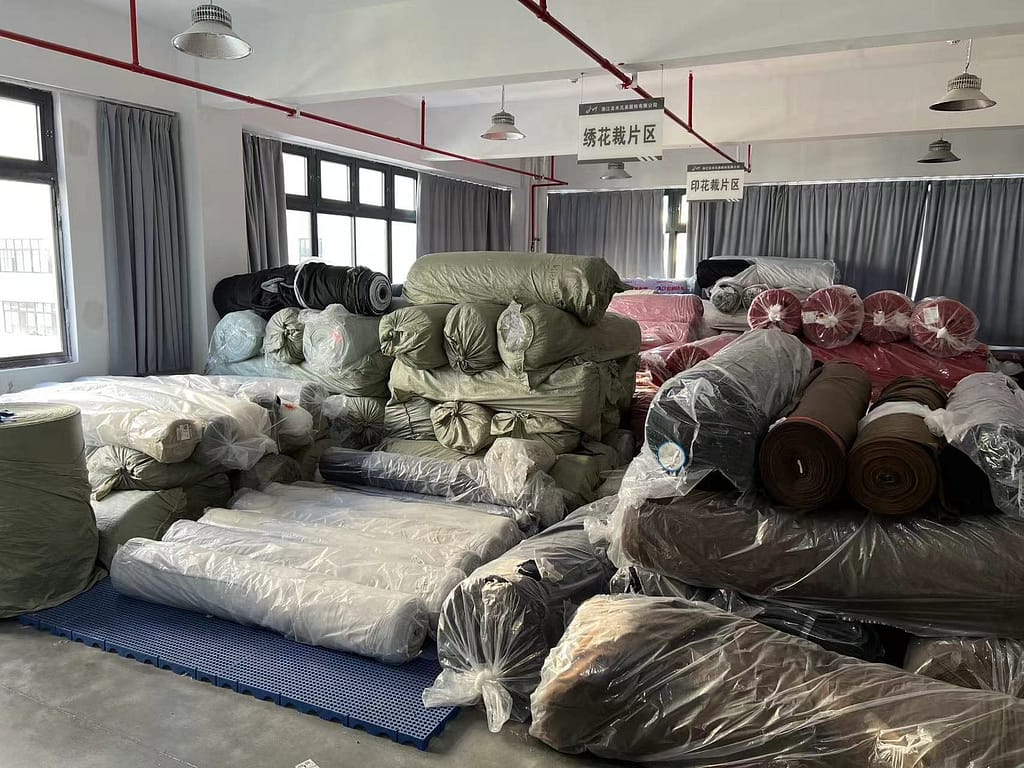
Sourcing the Fabric: After sample approval, the necessary materials are sourced. Valtin Apparel takes advantage of its proximity to China’s largest fabric market to secure high-quality materials efficiently. Whether you need a specific cotton blend, fleece, or a unique fabric for the lining, we ensure all materials are sourced according to your specifications.
Fabric Testing: Before production begins, the fabric undergoes quality checks to ensure it meets durability, color consistency, and shrinkage standards. This ensures that the fabric can handle printing, embroidery, and the rigors of daily wear, delivering a hoodie that maintains its appeal over time.
Cutting and Sewing
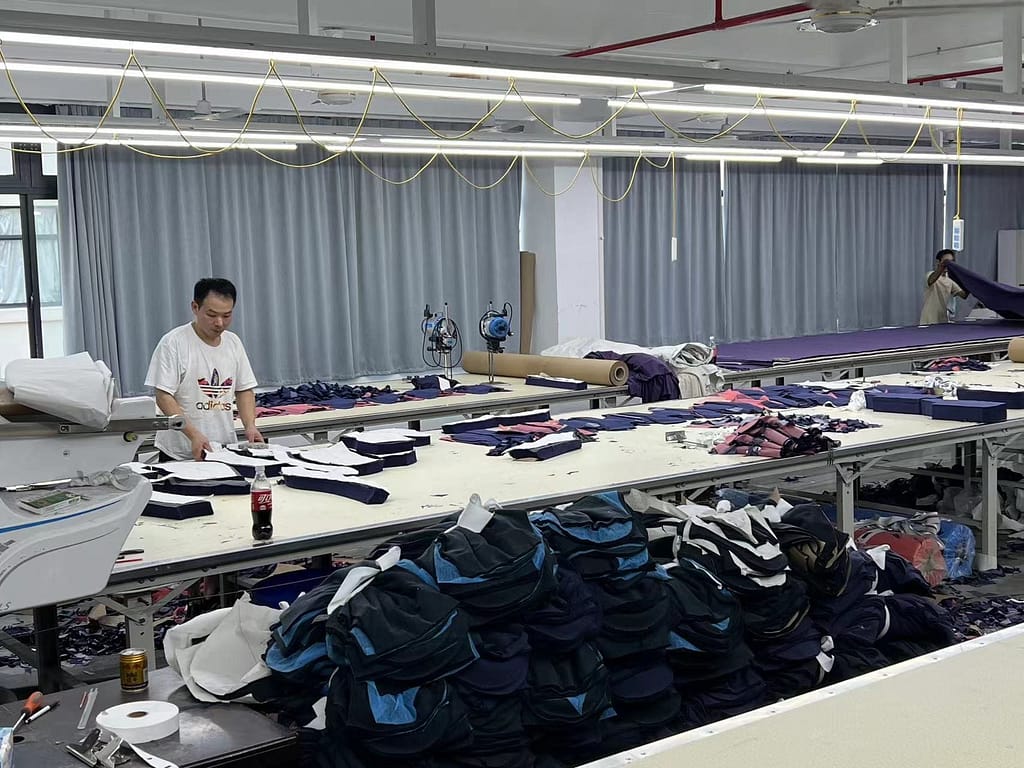
Pattern Cutting: The next step involves creating patterns for each hoodie component (body, sleeves, hood, cuffs, etc.). These patterns are used to cut the fabric in precise dimensions, ensuring uniformity across the entire production batch.
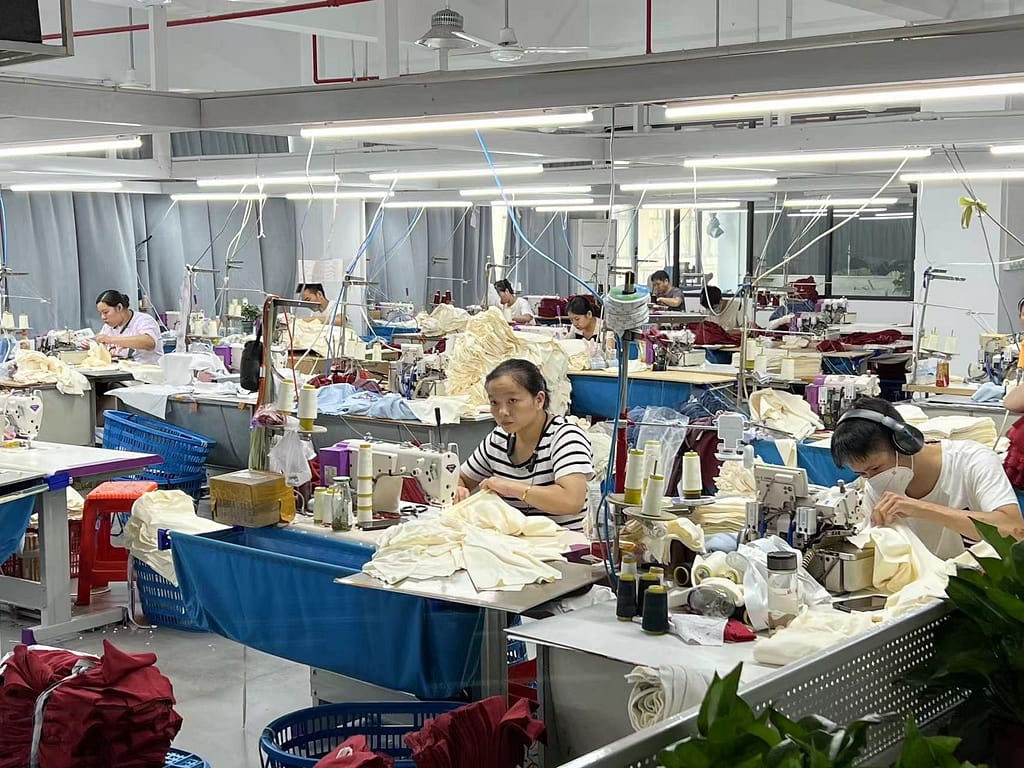
Sewing and Construction: Once the fabric pieces are cut, they are sewn together by skilled workers. During this stage, special attention is paid to the craftsmanship elements discussed earlier, such as reinforced seams, flatlock stitching for comfort, and high-quality ribbing at the cuffs and waistband. Each hoodie goes through multiple quality checks to identify and correct any flaws before moving forward.
Customization Application
Printing and Embroidery: Whether your hoodies feature screen-printed graphics, embroidered logos, or heat-transferred designs, this step adds the final personalized touches. At Valtin Apparel, we have specialized equipment to handle different customization techniques, ensuring that the final product meets your brand’s quality standards.
Labeling and Finishing Touches: Branding details such as custom labels, hang tags, and drawstring tips are added during this phase. Packaging elements like branded poly bags are also prepared at this stage to create a complete, ready-to-ship product that carries your brand’s image.
Quality Control Checks
In-Process Inspections: Throughout the sewing and customization process, in-process inspections are conducted to ensure consistency in sizing, stitching quality, and design placement. Any deviations are immediately corrected to maintain high standards of production.
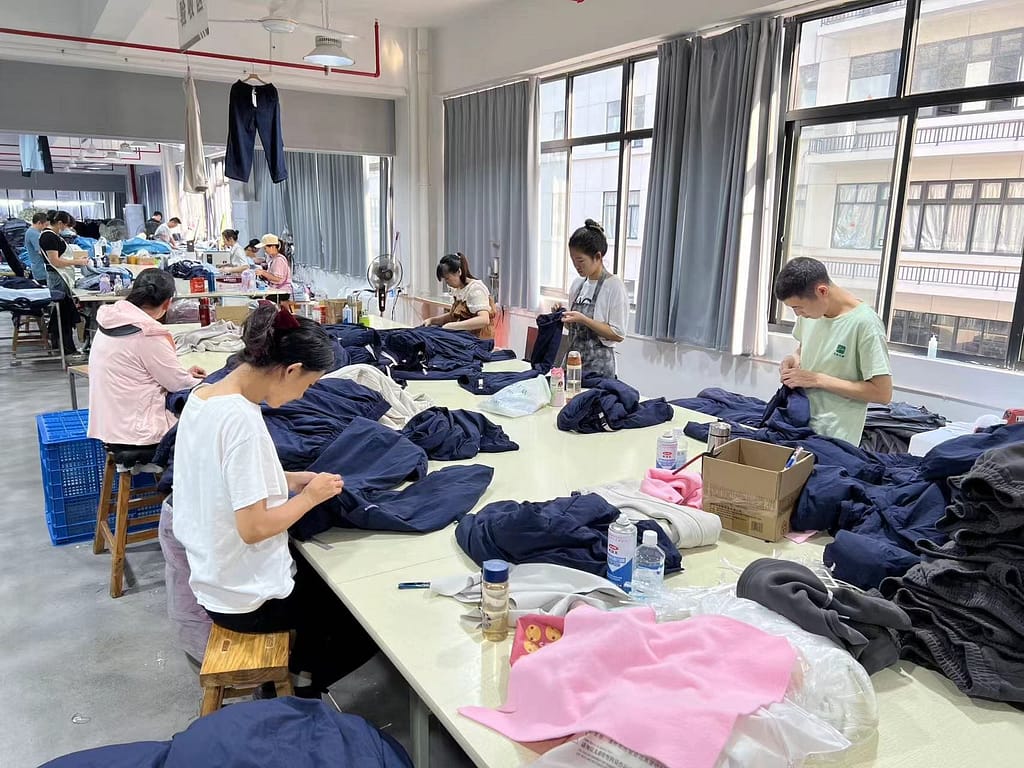
Final Quality Inspection: Before the hoodies are packed, a final quality inspection is performed to ensure that each hoodie meets the agreed-upon standards. Elements such as fabric quality, seam strength, color accuracy, and branding placement are closely examined.
Packaging and Shipping

Packaging for Protection: Each hoodie is packaged to ensure it arrives at its destination in perfect condition. At Valtin Apparel, we provide options for custom packaging to enhance your customers’ unboxing experience and strengthen your brand’s identity.
Bulk Shipping: Once packaging is completed, the hoodies are shipped out based on your preferred logistics method. We offer reliable and flexible logistics options to meet your delivery schedules. As a startup, managing logistics efficiently can help prevent costly delays, which is why we prioritize timely delivery and clear communication throughout this phase.
Lead Times for Samples and Bulk Production
- Sample Production: At Valtin Apparel, the sample production time is 10-14 days. This relatively short timeframe allows you to quickly evaluate the prototype and make any necessary adjustments before committing to full-scale production. Samples are a critical step to minimize risks and ensure that the final product aligns with your vision.
- Bulk Production: Once the sample is approved, the bulk production takes 28-35 days, depending on the order volume and the specific customizations involved. Valtin Apparel understands the importance of meeting deadlines, particularly for startups that need to align production timelines with seasonal product launches or marketing campaigns. Maintaining these lead times helps you confidently plan for launches without the worry of missed deadlines.
Ensuring Smooth Production: Key Considerations
- Effective Communication
- Clear and consistent communication is essential in avoiding delays and ensuring that your design specifications are fully understood. At Valtin Apparel, we encourage regular check-ins and provide updates throughout the production process, so you always know what’s happening with your order.
- Confirming Specifications Early On
- Finalizing the Tech Pack, fabrics, colors, and customization details early helps prevent costly mistakes during production. The more detailed and clear your specifications, the smoother the production process will be.
- Flexibility in Order Volume
- As a startup, managing inventory is crucial. Valtin Apparel’s minimum order quantity (MOQ) of 200 pcs per style, with options for 4 sizes and 2 colors, provides flexibility that helps you manage cash flow and inventory risk while still producing at a scale that meets demand.
- Managing Timelines
- Always factor in potential delays when planning for production. Whether due to logistics, fabric availability, or customization complexity, having a buffer in your timeline helps mitigate the risks of missed delivery dates. Communicate your target deadlines clearly, and always discuss any time-sensitive requirements with us upfront.
- Proactive Quality Control
- Issues that go unnoticed can lead to product returns and unhappy customers. Valtin Apparel incorporates multiple quality checks throughout production, ensuring that each batch meets your expectations. As a startup, your reputation is directly tied to the quality of the product, which is why quality control should be a priority at every stage.
Valtin Apparel’s Commitment to an Efficient Manufacturing Process
Valtin Apparel is committed to providing a hassle-free, high-quality manufacturing process for startups. From sourcing fabrics to delivering the finished product, our goal is to ensure that you can focus on building your brand, confident that your products are being handled by experienced professionals:
- End-to-End Support: We provide support throughout the process, including design recommendations, material sourcing, and technical expertise, ensuring that the production is as smooth as possible.
- Quality Assurance: We believe that quality should never be compromised, especially for a startup that is building its reputation. Our multi-layered quality control ensures your hoodies reflect the quality and craftsmanship your brand stands for.
- Reliable Timelines: Understanding the challenges startups face, we offer clear timelines for production and shipping, ensuring you have the products you need when you need them.
Quality Control and Avoiding Common Pitfalls
Quality is the backbone of a successful hoodie line—especially for startups trying to carve a niche in a competitive market. While selecting the right style, fabric, and ensuring the production runs smoothly are critical components of hoodie manufacturing, quality control ensures that your brand is delivering consistent value to your customers. In this section, we’ll explore quality control measures that should be prioritized during the production process and common pitfalls to avoid when manufacturing your hoodies.
Quality Control Procedures for Hoodie Production
- Fabric Testing
- Shrinkage and Color Fastness: Before mass production, each fabric should be tested for shrinkage, color fastness, and general wearability. The fabric should retain its shape and color even after multiple washes to ensure long-term customer satisfaction.
- Touch and Texture: The tactile quality of your fabric can significantly impact customer perception. A soft, smooth fabric is more likely to be worn and cherished. Our team at Valtin Apparel takes great care to ensure that the fabrics sourced pass the required texture and comfort tests before being cut and sewn.
- Pre-Production Sample Check
- Prototype Assessment: The first step in quality control involves assessing the pre-production sample (the prototype). This hoodie sample is reviewed in detail for design accuracy, fit, comfort, and overall quality. It should match the specifications in the Tech Pack exactly—this includes colors, measurements, customization placements, and materials. This prototype acts as the benchmark for the entire production run.
- In-Process Quality Inspections
- Stitching and Seaming: During the production stage, in-process quality inspections are conducted to monitor the sewing quality. This includes checking that all seams are reinforced, the stitching is straight, and there are no loose threads or missed stitches.
- Measurement Checks: Each part of the hoodie, from the sleeve length to the body width, must match the exact specifications. Regular measurement checks ensure consistency in sizing throughout the batch, preventing issues where some products fit significantly differently from others.
- Post-Production Inspection
- Defect Identification: Once the hoodies are fully constructed, they undergo a post-production inspection. During this stage, the quality team inspects each hoodie for potential defects such as holes, misaligned prints, poorly sewn labels, and any inconsistencies in customization. Each product must meet the established standard before moving to packaging.
- Functional Checks: For zip-up hoodies, the quality team will test the zippers to ensure they work smoothly without jamming. For pullover styles, they check for strength in areas that endure the most stress, such as the cuffs and neckline.
- Customization and Branding Verification
- Print and Embroidery Quality: Whether your hoodies feature screen prints, embroidery, or heat transfers, it’s crucial to ensure that these elements are high quality. This includes verifying color vibrancy, edge sharpness, and the positioning of logos or designs. Embroidery should have a clean finish with no visible backing or stray threads.
- Label and Tag Check: Custom branding elements like woven labels, care tags, and hang tags are verified for proper placement and accuracy. Even small mistakes in labeling can damage a brand’s reputation, especially in early stages.
Common Pitfalls in Hoodie Manufacturing and How to Avoid Them
- Inadequate Fabric Quality
- Pitfall: Using subpar fabric can result in complaints about discomfort, durability issues, or an overall “cheap” feel. It’s a critical mistake, especially for startups aiming to create a premium perception of their brand.
- Solution: Always source high-quality fabrics from reputable suppliers. With Valtin Apparel, we leverage our access to China’s largest fabric market to ensure your hoodie material is up to standard. Additionally, rigorous testing for shrinkage, texture, and durability is part of our process to guarantee customer satisfaction.
- Poor Sizing Consistency
- Pitfall: One of the most common issues in hoodie production is inconsistency in sizing across the batch. This can lead to dissatisfied customers who expect a specific fit based on their past purchases.
- Solution: Proper size grading during pattern making is essential, and regular measurement checks throughout production help maintain consistency. At Valtin Apparel, we maintain detailed size guides and test samples across each size to ensure uniformity.
- Misaligned or Poor Quality Customization
- Pitfall: Misplaced logos, poor-quality embroidery, or blurry prints can ruin the look of your hoodie. These issues often arise from improper handling during the customization stage.
- Solution: Quality checks are performed before, during, and after applying any logos or graphics to verify placement and quality. We also use advanced equipment for printing and embroidery, ensuring that each detail is executed as intended, with sharp, vibrant finishes.
- Delayed Communication Leading to Production Errors
- Pitfall: Miscommunication between your startup and the manufacturer can lead to production errors, which can be costly both in terms of time and resources. Changes in design or materials not properly communicated can result in entire batches needing rework.
- Solution: Establish clear communication channels and agree upon every detail in writing before production starts. At Valtin Apparel, we encourage our clients to maintain an open line of communication and provide updates during every step of the production process. We also ensure every specification is confirmed before moving forward with production.
- Neglecting Wear Testing
- Pitfall: Skipping wear testing means you won’t know how well your hoodies perform in real-life conditions. This could result in complaints about discomfort, shrinking, or fading once customers start wearing them.
- Solution: Conduct wear testing on the sample to assess its durability, colorfastness, and fit. Wear testing simulates real-life use and gives valuable insights into how your product will perform over time. At Valtin Apparel, we support our clients in conducting these tests and making adjustments as needed.
- Ignoring Packaging Quality
- Pitfall: Skimping on packaging might save costs initially, but it negatively impacts the customer’s first impression. Damaged or unattractive packaging can detract from the value of your product.
- Solution: Always invest in sturdy and branded packaging that protects your hoodies during shipping and adds to the unboxing experience. With Valtin Apparel, we provide customizable packaging options that not only secure the product but also contribute to your brand’s overall presentation.
Valtin Apparel’s Quality Assurance Procedures
At Valtin Apparel, quality control is integrated at every stage of the production process. Here’s how we help ensure the best possible product for your brand:
- Multiple Checkpoints: We perform multiple quality inspections—starting from fabric quality testing to the final post-production review. Each stage of the manufacturing process includes checks to identify and fix potential issues before they escalate.
- Trained Quality Inspectors: Our quality inspectors are trained to understand the unique requirements of hoodie production, including sewing quality, customization precision, and branding placement. This expertise helps minimize defects and improve the reliability of each order.
- Proactive Client Communication: If we notice any issues during production, we communicate with our clients immediately to resolve them before they become significant problems. This proactive approach is key in avoiding costly reworks and ensuring timelines are adhered to.
Maintaining High Standards and Building Customer Trust
For startups, delivering high-quality hoodies consistently can make or break customer trust and brand loyalty. Ensuring top-notch quality through stringent quality control measures translates into fewer returns, more repeat customers, and positive word-of-mouth—all of which are essential for growing a brand.
By choosing a manufacturer like Valtin Apparel, you are opting for a partner that understands the importance of these elements and provides you with reliable processes, expert craftsmanship, and quality materials. Our goal is to make sure that each hoodie that carries your brand name is one that your customers will love and remember.
Minimum Order Quantity, Costs, and Payment Terms
Navigating the financial aspects of hoodie production is essential for any startup, as effective budgeting and understanding payment structures can significantly impact your business’s success. In this section, we’ll explore how Minimum Order Quantities (MOQs), production costs, and payment terms come into play when you work with a manufacturer like Valtin Apparel. This knowledge will help you make informed financial decisions that align with your business goals while maintaining the quality and efficiency needed to grow your brand.
Understanding Minimum Order Quantity (MOQ)
Minimum Order Quantity (MOQ) refers to the smallest quantity of units a manufacturer is willing to produce in a single batch. The MOQ is a crucial consideration, especially for startups that may not need large inventories initially.
- MOQ at Valtin Apparel
- At Valtin Apparel, our MOQ for hoodie production is 200 pieces per style, which includes 4 different sizes and 2 color options. This MOQ offers startups a good balance—enabling you to produce enough product to reach customers without overextending on inventory costs.
- Why MOQ Matters: Manufacturers set MOQs to maintain production efficiency and reduce costs. Producing smaller quantities often leads to increased production costs per unit, as the fixed costs of setting up machinery, sourcing materials, and managing quality inspections are spread across fewer items.
- Advantages of Our MOQ Policy for Startups
- Cost-Efficiency: Producing 200 pieces ensures economies of scale, which keeps your per-unit cost manageable while still meeting the demand for customization and quality. Startups benefit from minimizing production costs while still being able to meet customer demands effectively.
- Risk Management: A moderate MOQ of 200 pieces allows you to test your product in the market without a significant overproduction risk. It’s enough to meet initial orders while allowing flexibility if changes need to be made in subsequent batches.
Production Costs and Pricing Strategies
Understanding production costs and pricing strategies helps you maintain a healthy profit margin while offering a competitively priced product to your customers. Here are the components to consider:
- Components of Production Costs
- Fabric Costs: The type of fabric you choose significantly impacts the overall production cost. Natural fibers like organic cotton tend to be more expensive, while blended fabrics (e.g., cotton-polyester) are more affordable. The fabric market proximity allows Valtin Apparel to source materials at competitive prices, thereby offering startups flexibility in cost management.
- Customization Costs: Elements like screen printing, embroidery, special zippers, or branded hang tags each add to the production cost. For example, embroidery is more labor-intensive than screen printing, leading to a slightly higher cost. Knowing your customization options and their price implications can help you design your product to fit your budget.
- Labor and Overhead: The complexity of your hoodie’s design also affects labor costs. Hoodies with detailed stitching, multiple customization areas, or specialized lining will incur higher production costs than simpler designs.
- Sample Fee: Valtin Apparel charges a sample fee of $100 USD. Producing a sample is an investment that ensures you’re happy with the product before committing to bulk production, minimizing the risk of costly reworks or dissatisfaction.
- Balancing Quality with Costs
- For startups, it’s tempting to cut corners to save on production costs, but quality should never be compromised. Poor-quality hoodies can damage your brand reputation, leading to returns, bad reviews, and ultimately a loss in customer loyalty.
- Our Recommendation: At Valtin Apparel, we encourage you to focus on the aspects of the hoodie that matter most to your customers—like fabric quality, comfort, and craftsmanship. Allocating more of your budget to these elements while scaling back on less crucial features can provide a good balance between cost and quality.
- Setting a Pricing Strategy
- Cost-Plus Pricing: Determine your production costs per hoodie (including labor, materials, shipping, and packaging) and add a profit margin that makes sense for your business. This straightforward approach helps ensure each sale is profitable.
- Market-Based Pricing: Analyze your competitors’ pricing and decide where your hoodies should be positioned. If your brand emphasizes high quality and customization, pricing your product at a premium may help convey value. Alternatively, if your competitive edge lies in affordability, a lower margin with a higher sales volume strategy could work better.
- Consider Value-Added Costs: Include additional costs like packaging, shipping to distributors, and import duties in your pricing model. These often-overlooked elements are crucial in determining your final price and ensuring profitability.
Planning for Financial Success as a Startup
Managing finances effectively during production helps position your startup for long-term growth. Here’s a summary of how you can use these insights to set yourself up for success:
- Start Small, Scale Wisely: Use the MOQ as an opportunity to start with a manageable batch, gather customer feedback, and iterate before scaling up.
- Understand All Costs: Don’t just think about the production costs—factor in shipping, customs, and packaging. Knowing the total cost allows for better pricing decisions and maintains your margins.
- Maintain Transparency and Clear Agreements: Settle on clear payment terms with your manufacturer to avoid misunderstandings. Being transparent with your production partner helps ensure a smooth production process and solidifies a professional relationship that’s built to last.
At Valtin Apparel, we understand that managing production costs, cash flow, and navigating payment terms can be challenging for startups. That’s why we are committed to providing clarity and support throughout the manufacturing process—from flexible MOQs to clear and secure payment structures. Our goal is to help you manage production without financial strain, ensuring that your startup is well-positioned for success in the apparel market.
Logistics and Delivery
Once your hoodies have been produced and pass all quality checks, the next step is ensuring they arrive at their destination efficiently and securely. Logistics and delivery are critical components of the manufacturing process, particularly for startups that need reliable timelines to fulfill customer demand and meet market expectations. In this section, we’ll discuss the key elements of managing logistics, avoiding common shipping pitfalls, and how Valtin Apparel supports smooth delivery.
Key Aspects of Shipping and Logistics for Hoodie Orders
- Packaging for Protection and Presentation
- Durability in Transit: Proper packaging is essential to protect your hoodies during transit. Our approach at Valtin Apparel includes using high-quality poly bags and, if needed, branded boxes that help minimize damage and ensure the product reaches your customer in perfect condition. Hoodies are susceptible to moisture and dust during shipment, and packaging solutions must protect against these potential threats.
- Branded Packaging Options: As a startup, creating a memorable unboxing experience is an important opportunity to impress customers. Valtin Apparel offers branded packaging options, including custom poly bags, tissue wrapping, or logo-stamped boxes, that reflect your brand’s identity. A well-packaged hoodie enhances perceived value and can boost customer satisfaction and loyalty.
- Choosing the Right Shipping Method
- Air Freight vs. Sea Freight: Depending on your delivery timelines and budget, you can choose between air freight and sea freight for shipping your bulk hoodie orders. Air freight is significantly faster and ideal for startups with urgent market deadlines, but it is more expensive. Sea freight, on the other hand, is cost-effective but involves longer transit times, which is suitable for less time-sensitive deliveries.
- Courier Services for Small Batches: For smaller quantities or sample shipments, using international courier services like DHL, FedEx, or UPS can be a quick and effective solution. This ensures that the samples or limited stock batches arrive swiftly, helping you make timely decisions about product quality, market testing, and customer delivery.
- International Shipping Considerations
- Customs Clearance: Understanding customs requirements is critical when shipping internationally, as missteps can result in costly delays. Valtin Apparel provides support in handling the documentation required for customs clearance, including invoices, packing lists, and certificates of origin, to facilitate a smooth transition across borders.
- Duties and Taxes: Import duties, taxes, and other fees vary depending on the destination country. It’s essential to factor these into your pricing strategy to avoid unexpected costs. As a startup, knowing whether your delivery terms are DDP (Delivered Duty Paid) or DDU (Delivered Duty Unpaid) helps in planning and communicating shipping costs to your buyers accurately.
Conclusion
Manufacturing hoodies as a startup can be an incredibly rewarding venture. By mastering the details—everything from understanding popular styles and selecting the best fabric to ensuring quality craftsmanship, smart customization, and efficient logistics—you can create a product that resonates with your target audience and embodies your brand’s vision. With careful attention to quality control, clear communication, and strategic planning of costs, MOQs, and shipping, you can ensure that your hoodie line not only meets but exceeds customer expectations.
Contact us today to get started—whether you want to order samples, learn more about our customization options, or discuss production timelines, we’re ready to help. Visit our website at www.valtinapparel.com. Let’s create something amazing together.

